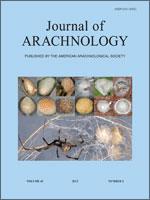Spiders in many families are capable of locomotion on the surface of water, a capability that, at its simplest, requires only a strongly hydrophobic integument and the same postures and motions that are used on land. Specialized aquatic gaits, in contrast, are only characteristic in the Pisauridae, Trechaleidae, Ctenidae, and Tetragnathidae. They are less common features of aquatic locomotion in Lycosidae, are only occasionally encountered in Salticidae, and are rare in Araneidae. Most of what is known about the biomechanics of these specialized gaits comes from research on fishing spiders (Pisauridae) and, because the physics and hydrodynamics are similar in many respects, on water striders (Insecta: Hemiptera: Gerridae). In what follows, I have concentrated on the biomechanics of propulsion in water-walking spiders and water striders because propulsion on the air-water interface was mysterious until the 1990s when researchers began seeking answers to the central question: What provides the resistance against which a spider or water strider pushes when it sweeps its legs backward? The answers, now nearly complete, include a) dimple distortion, b) drag, c) generation of vortices, and d) nanoscale brushing of the water surface by hydrophilic hairs.
How to translate text using browser tools
1 August 2013
Spider locomotion on the water surface: biomechanics and diversity
Robert B. Suter
ACCESS THE FULL ARTICLE

The Journal of Arachnology
Vol. 41 • No. 2
August 2013
Vol. 41 • No. 2
August 2013
air-water interface
Aquatic propulsion
fishing spiders
gait
galloping
hydrophobic surface
nanoscale




